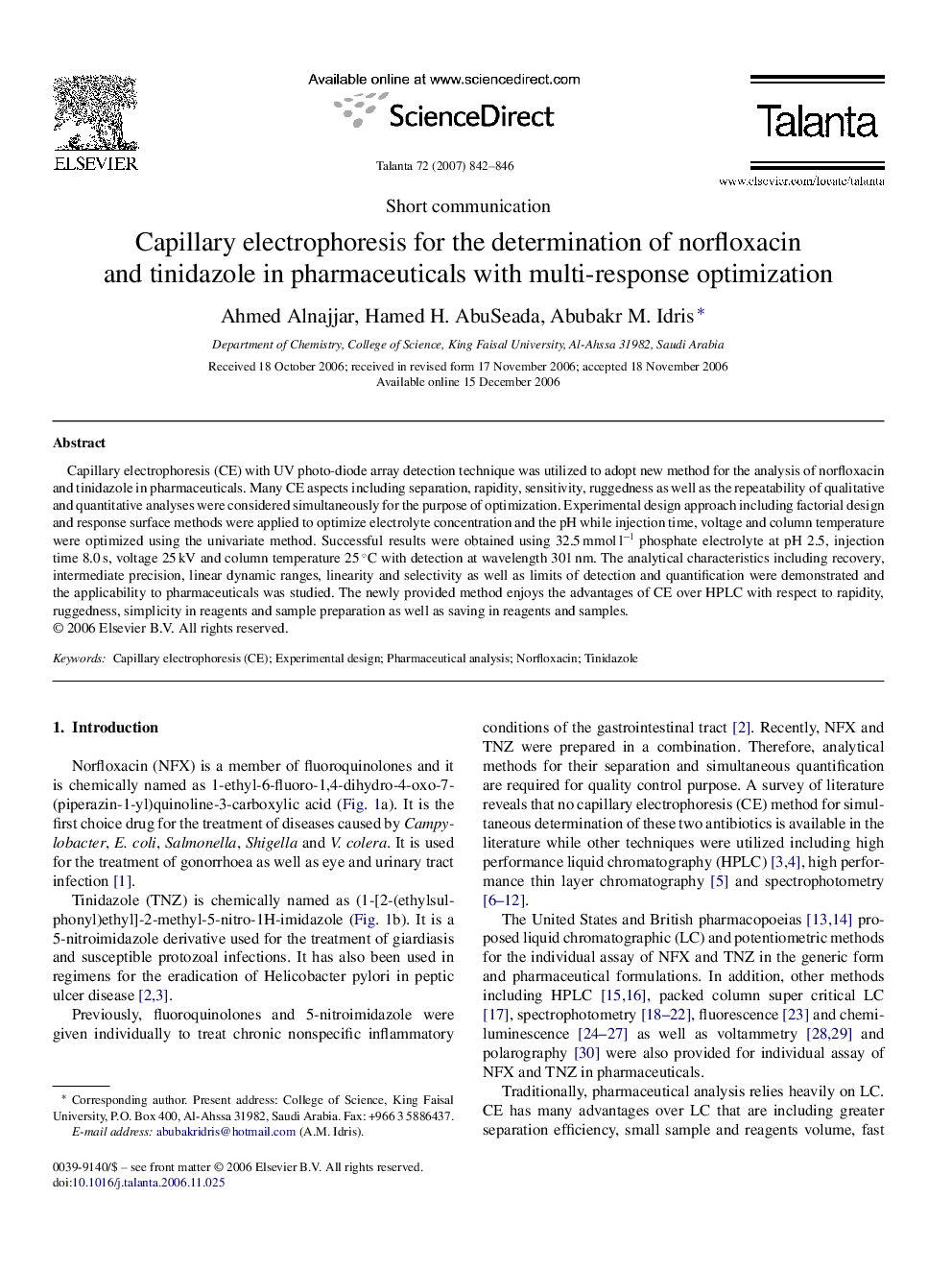| Article ID | Journal | Published Year | Pages | File Type |
|---|---|---|---|---|
| 1246018 | Talanta | 2007 | 5 Pages |
Abstract
Capillary electrophoresis (CE) with UV photo-diode array detection technique was utilized to adopt new method for the analysis of norfloxacin and tinidazole in pharmaceuticals. Many CE aspects including separation, rapidity, sensitivity, ruggedness as well as the repeatability of qualitative and quantitative analyses were considered simultaneously for the purpose of optimization. Experimental design approach including factorial design and response surface methods were applied to optimize electrolyte concentration and the pH while injection time, voltage and column temperature were optimized using the univariate method. Successful results were obtained using 32.5 mmol lâl phosphate electrolyte at pH 2.5, injection time 8.0 s, voltage 25 kV and column temperature 25 °C with detection at wavelength 301 nm. The analytical characteristics including recovery, intermediate precision, linear dynamic ranges, linearity and selectivity as well as limits of detection and quantification were demonstrated and the applicability to pharmaceuticals was studied. The newly provided method enjoys the advantages of CE over HPLC with respect to rapidity, ruggedness, simplicity in reagents and sample preparation as well as saving in reagents and samples.
Keywords
Related Topics
Physical Sciences and Engineering
Chemistry
Analytical Chemistry
Authors
Ahmed Alnajjar, Hamed H. AbuSeada, Abubakr M. Idris,
